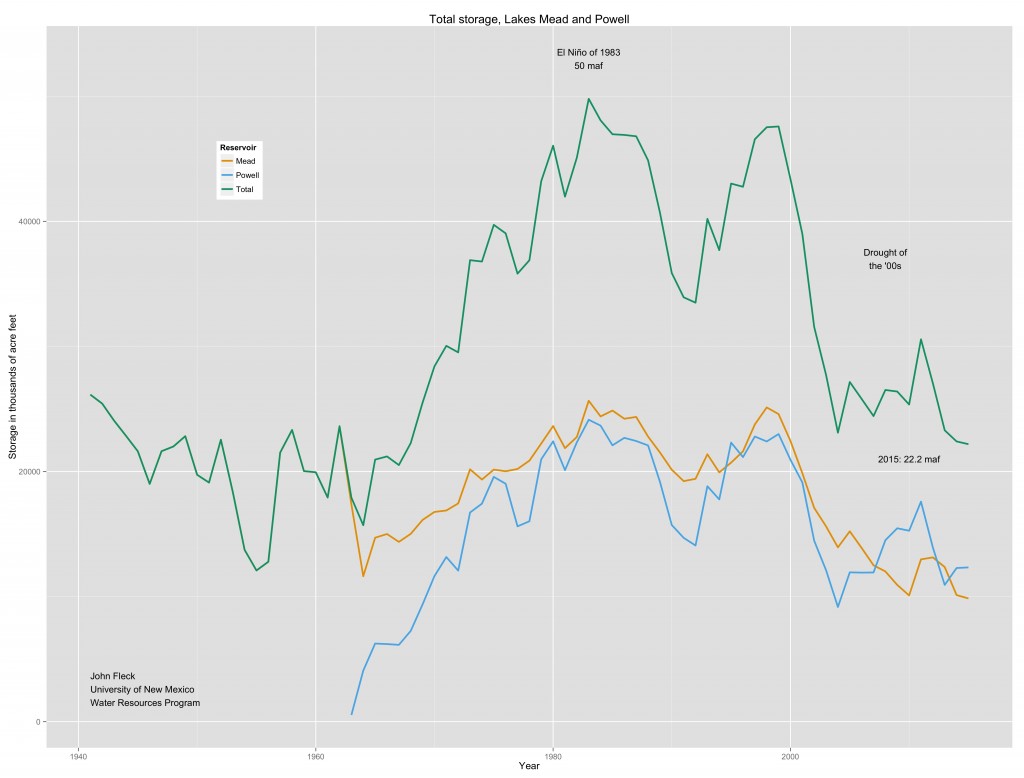It’s one of those milestones that’s an entirely arbitrary result of the units we use to measure, but it’s probably nevertheless worth marking: for the first time since it was filled in the 1930s, Lake Mead ended the “water year” below 10 million acre feet of storage.
The finally elevation at midnight last Wednesday, Sept. 30, was 1,078.1 feet above sea level at the big Colorado River reservoir, which holds water for use in Nevada, Arizona, California, Sonora, and Baja. That translates to an estimated 9.854 million acre feet in storage, down from 10.121 maf a year ago. That is 38 percent of capacity.
Total storage in Mead and Lake Powell, the reservoir upstream of the Grand Canyon that holds most of the rest of the Colorado River Basin’s stored water, ended the water year at 22.187 maf, down from 22.407 maf a year ago.
A few notes on this….
As Central Arizona Project board president Lisa Atkins noted this week, a combination of a wet late spring and summer and efforts by lower basin water uses to conserve and leave water in Lake Mead has postponed a “shortage” declaration until at least 2017 and possible later. More on that here.
The crazy accounting system used to manage the river measures some things on a “water year” basis (Oct. 1 – Sept. 30) and some things on a calendar year basis, so we won’t have final water use accounting until the end of the year, but the latest forecast numbers published this morning (pdf) project water users in California, Arizona, and Nevada will collectively use 7.165 million acre feet of their 7.5 million acre feet 2015 allotment. If this holds, that would be the lowest water use for the three states since 2005 and 17 percent below “peak Lower Basin Colorado River water use” in 2002.


Pingback: Lake Mead: my depressing graph, now readable on your phone - jfleck at inkstain
At these levels, the dams are at least safer, and less siltation is happening. What about this Wikipedia entry:
https://en.wikipedia.org/wiki/Risks_to_the_Glen_Canyon_Dam
Are all the statements there accurate?
LEB –
I don’t know Glen Canyon issues well enough to judge the accuracy of the Wiki piece other than the siltation issue. John Sabo and colleagues did a reanalysis of the problem in PNAS in 2010 (doi: 10.1073/pnas.1009734108) and concluded that it was less of a problem than the Wiki article would suggest: “Thus, although Reisner was correct that reservoirs fill with sediment, observed infilling and complete loss of storage function is by no means exclusively a western phenomenon and will not likely occur for most large reservoirs in the foreseeable future.”